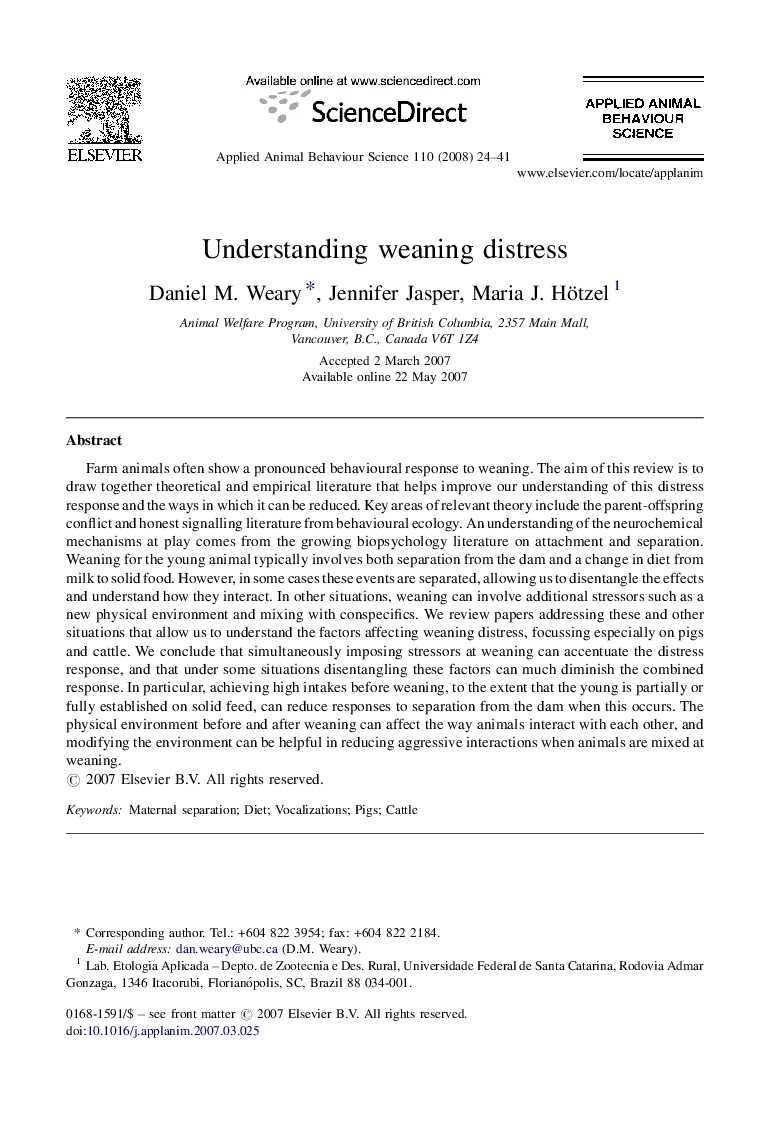| کد مقاله | کد نشریه | سال انتشار | مقاله انگلیسی | نسخه تمام متن |
|---|---|---|---|---|
| 4524082 | 1625425 | 2008 | 18 صفحه PDF | دانلود رایگان |

Farm animals often show a pronounced behavioural response to weaning. The aim of this review is to draw together theoretical and empirical literature that helps improve our understanding of this distress response and the ways in which it can be reduced. Key areas of relevant theory include the parent-offspring conflict and honest signalling literature from behavioural ecology. An understanding of the neurochemical mechanisms at play comes from the growing biopsychology literature on attachment and separation. Weaning for the young animal typically involves both separation from the dam and a change in diet from milk to solid food. However, in some cases these events are separated, allowing us to disentangle the effects and understand how they interact. In other situations, weaning can involve additional stressors such as a new physical environment and mixing with conspecifics. We review papers addressing these and other situations that allow us to understand the factors affecting weaning distress, focussing especially on pigs and cattle. We conclude that simultaneously imposing stressors at weaning can accentuate the distress response, and that under some situations disentangling these factors can much diminish the combined response. In particular, achieving high intakes before weaning, to the extent that the young is partially or fully established on solid feed, can reduce responses to separation from the dam when this occurs. The physical environment before and after weaning can affect the way animals interact with each other, and modifying the environment can be helpful in reducing aggressive interactions when animals are mixed at weaning.
Journal: Applied Animal Behaviour Science - Volume 110, Issues 1–2, March 2008, Pages 24–41